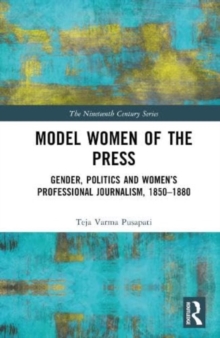
George Newnes and the New Journalism in Britain, 1880–1910 : Culture and Profit PDF
by Kate Jackson
Part of the The Nineteenth Century Series series
Description
This is a study of the noted newspaper proprietor, publisher and editor, George Newnes and his involvement in the so-called New Journalism in Britain from 1880 to 1910.
The author examines seven of Newnes’s most successful periodicals - Tit-Bits (1881), The Strand Magazine (1891), The Million (1892), The Westminster Gazette (1893), The Wide World Magazine (1898), The Ladies’ Field (1898) and The Captain (1899) - from a biographical, journalistic and broader cultural perspective. Newnes assumed a pioneering role in the creation of the penny miscellany paper, the short-story magazine, the true-story magazine and the respectable boys’ paper, in the development of colour printing, magazine illustration and photographic reproduction, and in the redefinition of both political and sporting journalism.
His publications were shaped by his own distinctive brand of paternalism, his professional progression within the field of journalism, his liberal-democratic and imperialist beliefs, and his particular skill as an entrepreneur.
This innovative periodical publisher utilised the techniques of personalised journalism, commercial promotion and audience targeting to establish an interactive relationship and a strong bond of identification with his many readers. Kate Jackson employs an interdisciplinary approach, building on recent scholarship in the field of periodical research, to demonstrate that Newnes balanced and synthesised various potentially conflicting imperatives to create a kind of synergy between business and benevolence, popular and quality journalism, old and new journalism and , ultimately, culture and profit.
Information
-
Download - Immediately Available
- Format:PDF
- Pages:304 pages
- Publisher:Taylor & Francis Ltd
- Publication Date:17/04/2018
- Category:
- ISBN:9781351933957
Other Formats
- Hardback from £130.00
- Paperback / softback from £39.99
- EPUB from £35.99
Information
-
Download - Immediately Available
- Format:PDF
- Pages:304 pages
- Publisher:Taylor & Francis Ltd
- Publication Date:17/04/2018
- Category:
- ISBN:9781351933957










